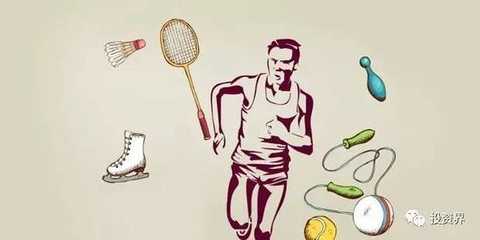
Investment community -
China's first portal for entrepreneurship and investment
At the moment of e-commerce, Decathlon continues to maintain the attractiveness of physical stores, adapting to the development of the times with unique low prices, compressed supply chain costs and experiential stores, and has won the favor of a large number of loyal fans.
Author |Snow
Report|WeChat public number: Kuai Sanxia
In the past year, whether it is supermarkets, shopping malls, fast fashion and luxury goods, most global physical stores have experienced a catastrophe.
Wal-Mart shut down 269 stores worldwide, Marks & Spencer closed all stores in China, MANGO shut down 450 stores worldwide, and Prada closed 25 stores...
While we are talking about the topic “Is the real economy not working, or the Internet economy is not workingâ€, one company has added 164 stores worldwide and has recently produced gratifying financial results. The financial report shows that last year's revenue increased by 12%, an increase of 4.4% over the previous year, reaching the scale of 10 billion euros before tax.
It is called Decathlon, the English name Decathlon. It uses the most practical business model to interpret the definition of the “decathlon movement†and gives the most inspirational direction of change in the traditional industry.
So, how exactly does Decathlon operate the entity?
Create a burst with a low price
Although it comes from France, where luxury goods are gathered, Decathlon is really a low-cost clear stream.
In 1976, Decathlon was founded in Enros, a small village near Lille, France. At the beginning of its establishment, Decathlon has defined its market position: in the same mall, it offers the lowest-priced sports products for all athletes, from beginners to professionals.
Because it is aimed at the mass market rather than the brand market, unlike the big-name, high-price consumer concept, in Decathlon shopping malls, consumers' biggest feeling is that the price is cheap. Moreover, it's amazingly cheap – 29 yuan shoulder bag, 30 yuan quick-drying T-shirt, 100 yuan running shoes...
In addition, there is a blue product in the Decathlon store, which is at least 20% cheaper than similar products on the market. Although such goods have low gross profit margins, stock turnover is high. They are either cost-effective entry-level products recommended by Decathlon, or the best-priced items in each class; they are placed in the most conspicuous position in the mall, attracting traffic with small profits, both image value and Economic Value.
This kind of cheap is different from Taobao and knock-off goods. The cheapness of Decathlon can make customers feel good and cheap.
In 2010, Decathlon launched a cashmere with a price of 49 yuan and a fabric density of 200 grams. The higher the density of fleece, the better the warmth, and the density of the products at the same price on the market was less than 200g; this fleece was called “God†by “Yuyou†and it was sold for several years. Products, products within the thousand dollars on the market, almost can not compete with it.
The Quechua backpack, which was launched in 2014 and sold for 29 yuan, was also unexpectedly popular. The Chinese aunt who went from the students to the square dance was on the back and became a “street bag†for all ages.
Make the most cost-effective
All along, low prices are the survival strategy of Decathlon, and only low prices, Decathlon is a fight against the cottage and Taobao. For Decathlon, low prices are not equal to inferior quality. What it really cares about is not short-term benefits, but how to provide users with affordable, competitive products.
How to maximize the price/performance ratio? Decathlon has several tricks for the store to learn from.
The first measure: abandon packaging
The aesthetic context of packaging is an important factor in marketing consumer product evaluation. Many merchants often think that the more beautiful the packaging, the easier it is to increase the price of the goods, and the more popular the commercial sales, such as Valentine's Day Rose and Mid-Autumn Festival moon cake.
Decathlon did the opposite. In order to maximize cost savings, many of Decathlon's products are not packaged. For example, in the production of custom, the production of shoe boxes was cancelled, so there is no shoe box for shoes purchased in Decathlon. Although this is being squandered by many Chinese consumers, Decathlon is not motivated by it, and it is still "going its own way."
The second measure: no middlemen make a difference
Decathlon integrates design, R&D, production, logistics, branding and retailing. This business model saves the cost of many middlemen and is the core of its low price and high sales.
At first, Decathlon was just a simple agent, but as its retail capacity continued to increase, so did the problem. It was difficult to coordinate the price or supply of the brand. In order to get rid of the constraints of the upstream of the industrial chain, Decathlon decided to enter the upstream brand and research and development field.
In 1986, Decathlon began experimenting with the production of sporting goods and gradually changed from agents to companies that produced their own brands. In order to cope with this change, Decathlon began to carry out production layout and resource integration on a global scale. Established international procurement branches in Thailand, Korea, China, Italy and Spain. So far, the production network has spread to 18 countries around the world.
The third measure: full innovation of its own brand
Decathlon's products cover a wide range of products, from the current sporting goods store, it is second to none.
In order to optimize the industrial chain and control costs, Decathlon provides consumers with a full range of services, not only in a wide variety, but also in a wide range. In addition to common sports products such as swimming, ball, fitness and outdoor, Decathlon also offers niche sports products such as equestrian, surfing, diving and golf.
90% of Decathlon's products come from its own sports brands, which have more than 20 brands. In order to ensure that each brand is more practical, comfortable and easy to use, there is a professional R&D team behind each brand. These team bases are often chosen in places where natural conditions are most suitable for the sport, maintaining direct contact with consumers.
In 2005, Decathlon launched a 2 second quick-open tent. Once it went on the market, it quickly became a hot-selling product and won the Innovation Award of the year. In fact, the tent was successfully tested after 18 months of repeated testing, and its development was carried out in a natural environment. In order to get closer to and understand the natural environment, Decathlon has set up the R&D center at the foot of Mont Blanc, and the R&D members are also highly skilled mountain climbers who truly love the mountains and know how to integrate them.
The fourth measure: do not find celebrity endorsements, do not get involved in sports sponsorship
Unlike Nike, Adidas, UA and other fascinating goods, Decathlon never asks for celebrity endorsements, nor does it involve sports events.
It is reported that Decathlon's annual publicity expenses are strictly controlled at 1% of the turnover, almost no advertising, full-screen word of mouth.
In the "Where is Dad Go" program on the hot screen in the past two years, Decathlon products are frequently exposed. In fact, Decathlon has never had a public relations exchange with the show, and the equipment used by the stars in the show and even the shooting team is self-purchased.
This is inextricably linked to the high cost performance of its products, and the cost of non-production as much as possible can be reduced to further control costs. Good word-of-mouth communication is the best advertising invisible.
Knowing where your core competencies are and sticking to it is the way to Decathlon. When many merchants tried to raise prices, struggled to get rid of the low-price image and went to the middle and high-end, and eager to make more money, Decathlon recognized the “mass route†from the beginning, taking the road of mass consumption and using cost-effective The product firmly grasps the needs of pragmatic consumers.
In-depth experiential marketing
In addition to price/performance, another feature of Decathlon is in-depth experiential marketing.
This is similar to IKEA. If IKEA is everyone's living room and bedroom, then Decathlon is everyone's playground and gym.
In the average of 4,000 square meters of Decathlon stores, there are more than 60 sports categories and more than 35,000 sports products. These products are divided into 11 areas according to customers' shopping habits and sports categories, from beginner entry-level products to professional athletes' professional products.
And its merchandise display is actually for the sports experience, there are basketball courts, five-person football field and badminton court experience area, Decathlon encourages everyone to experience its products. The work of the clerk is not to promote the product, but to train and accompany. For example, in the roller skating area, there is a large open space which is a test slide area. For the convenience of beginners, railings are set up around the road; roller skates, helmets and full set of protective gear can be worn on the upper body.
The rate of wear and tear caused by the experience often makes the traditional store a headache, but Decathlon thinks this is also part of the business. This deep experience model not only allows customers to feel and touch the product more intuitively, but also stimulates the customer's wonderful interest in a certain sport, thus creating a shopping desire.
In summary, it is not difficult to find that in the current e-commerce business, Decathlon continues to maintain the attractiveness of physical stores, with unique low prices, compressed supply chain costs and experiential stores to adapt to the development of the times, and obtained A large number of loyal fans favor.
Click on the image below to enter the reading

PPP will break out? The scale has exceeded 10 trillion yuan, and there is a wave of 45 trillion on the road.
China Sic Windows,Infrared Spectroscopy Optics supplier & manufacturer, offer low price, high quality Infrared Radiation Optics,Uv And Ir Windows, etc.Founded in 2014, Bena was co-founded by several experienced engineers who have more than 10 years of optical design, process, production and test. We provide customization service for high precision (rms = 1/100λ, λ=632.8nm), large diameter plane mirror (>500mm) and aspherical lens, as well as professional spherical lens (such as Optical Domes with diameter 280mm), involving different materials including K9, Silicon, Sapphire, SiC, glass ceramics, fused silica, and other various optical glasses, and we can also deal with the nickel-phosphorus alloy surface on different substrates.
Sic Windows,Infrared Spectroscopy Optics,Infrared Radiation Optics,Uv And Ir Windows
Changchun Bena Optical Products Co., Ltd , https://www.benaoptic.com